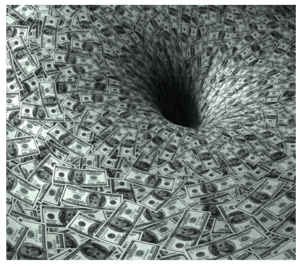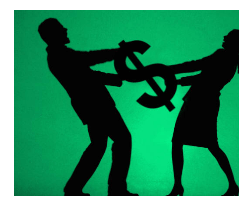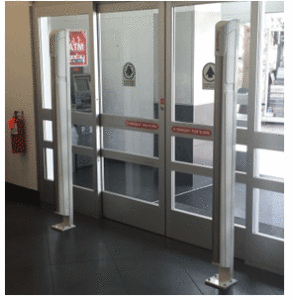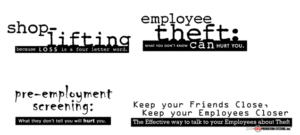 Yep, you probably are! The shoplifter that walked out the door with your $45 item cost you MORE actual money than $45!
Yep, you probably are! The shoplifter that walked out the door with your $45 item cost you MORE actual money than $45!
Many Retailers do not understand the actual impact of theft. For example:
You experience a $45 loss (shoplifting, employee theft, vendor fraud…). Is that $45 the total impact on the bottom line? Nope, you actually lost $2,250.00 in real money.
For your organization to simply recover or break even on a $45 loss, you would have to sell an additional $2,250.00 to break even! ($45.00 divided by .02% profit margin). This is on top of your normal sales.
WOW, how many more items are you going to have to order, receive, count, mark, prepare paperwork for, stock, and finally sell just to produce these extra sales? Theft/Shrinkage really cannot be recovered from because you should have had those sales to begin with.
Add to that the loss of sales because the stolen item was not available for sale to a legitimate customer.
You then begin to understand why one third of U.S. business failures are blamed on theft.
The obvious solution is to prevent the theft (we can help with that), errors and abuse that cause loss in the first place.
Loss vs. Sales
So if we assume for a moment that your company has a 2% bottom line net profit margin. Two percent is considered an overall retail normal margin. Yours may be higher/lower. The net profit is your final profit after all expenses such as payroll, payment to vendors, rent, taxes, utilities….
The chart below shows the sales required to replace losses due to theft:
AMOUNT OF LOSS 2% PROFIT MARGIN SALES
NEEDED TO REPLACE LOSSES
$100 $ 5,000
$500 $ 25,000
$ 2,500 $ 125,000
$ 5,000 $ 250,000
$ 7,500 $ 375,000
$10,000 $ 500,000
$12,500 $ 625,000
$15,000 $ 750,000
$17,500 $ 875,000
$20,000 $1,000,000
Inventory shrinkage cancels millions of dollars in sales. That means all of your hard work for an entire year can be wiped out by a single loss. Loss Prevention Systems can fix your shoplifting problems!
 I’m sure you’ve already read how shoplifters cost you money. It’s probably hard to digest the dire financial implications that shoplifters have on all of our businesses. Without adequate controls in place, you are putting your business and your financial well-being at risk, and honestly, you just can’t do that. That’s why we have to have a camera system and why EAS systems are a necessity and not just a “nice to have” technology. That’s exactly why we have to invest in exception reporting tools to help us identify criminal activity and why we preach the value of exceptional customer service in our stores.
I’m sure you’ve already read how shoplifters cost you money. It’s probably hard to digest the dire financial implications that shoplifters have on all of our businesses. Without adequate controls in place, you are putting your business and your financial well-being at risk, and honestly, you just can’t do that. That’s why we have to have a camera system and why EAS systems are a necessity and not just a “nice to have” technology. That’s exactly why we have to invest in exception reporting tools to help us identify criminal activity and why we preach the value of exceptional customer service in our stores. You have (or I hope you have) read the last article on preventing check fraud. It’s a great way to protect your business from a different avenue of fraud. Another, much more popular and prevalent scheme is credit card fraud. The United States lags far behind the other major countries in the fight against credit card fraud. We’ve only just begun adopting chip and pin technology and it will be several more years before we see magnetic strips become a relic of the past. So exactly how can you identify and prevent a fraudulent change from happening in your store and how exactly do you lose money on these transactions?
You have (or I hope you have) read the last article on preventing check fraud. It’s a great way to protect your business from a different avenue of fraud. Another, much more popular and prevalent scheme is credit card fraud. The United States lags far behind the other major countries in the fight against credit card fraud. We’ve only just begun adopting chip and pin technology and it will be several more years before we see magnetic strips become a relic of the past. So exactly how can you identify and prevent a fraudulent change from happening in your store and how exactly do you lose money on these transactions? You know, we talk about the thousands of ways you, the small business owner, loses money to thieves constantly. Most of that is centered on shoplifters and boosters stealing your merchandise. We talk about that for good reason… it’s one of the biggest financial impacts to your business if left unchecked. However, there are so many other ways that your business can be targeted by criminals and some of them may appear so legitimate, that you would have no idea you were a victim for weeks. In that time, the criminal is long gone and you’re left paying for that theft out of your pocket. One area of training that is often overlooked in retail is check fraud. I’ll give you some advice on how to identify this in your store and protect yourself from vulnerability.
You know, we talk about the thousands of ways you, the small business owner, loses money to thieves constantly. Most of that is centered on shoplifters and boosters stealing your merchandise. We talk about that for good reason… it’s one of the biggest financial impacts to your business if left unchecked. However, there are so many other ways that your business can be targeted by criminals and some of them may appear so legitimate, that you would have no idea you were a victim for weeks. In that time, the criminal is long gone and you’re left paying for that theft out of your pocket. One area of training that is often overlooked in retail is check fraud. I’ll give you some advice on how to identify this in your store and protect yourself from vulnerability.
 What is the solution to shoplifting and employee theft?
What is the solution to shoplifting and employee theft? Employee theft is a common and costly problem in retail. Some businesses’ are reporting that, for the first time, internal pilferage has now surpassed external. There are many ways to control and manage internal theft. But, one of the most effective ways is often overlooked. Stop it before it starts.
Employee theft is a common and costly problem in retail. Some businesses’ are reporting that, for the first time, internal pilferage has now surpassed external. There are many ways to control and manage internal theft. But, one of the most effective ways is often overlooked. Stop it before it starts. According to the National Retail Federation-
According to the National Retail Federation- Do you REALLY know how to stop shoplifters? I mean, really know? Your Checkpoint System is only half of the strategy. You spent the money, put the labor/time into using labels and tags but after the newness wears off, are you still having more losses than you want?
Do you REALLY know how to stop shoplifters? I mean, really know? Your Checkpoint System is only half of the strategy. You spent the money, put the labor/time into using labels and tags but after the newness wears off, are you still having more losses than you want?
 There’s been some news swirling around the LP world for a few weeks now about California and some new laws that the state has passed. Basically, the state raised the threshold for a felony theft to $950. The article hinted that shoplifting has increased in the major retail stores and calls for shoplifting cases have increased by 25% to the LAPD. The article blamed the new legislation for this. Here’s a link to that article if you’d like to read it. (
There’s been some news swirling around the LP world for a few weeks now about California and some new laws that the state has passed. Basically, the state raised the threshold for a felony theft to $950. The article hinted that shoplifting has increased in the major retail stores and calls for shoplifting cases have increased by 25% to the LAPD. The article blamed the new legislation for this. Here’s a link to that article if you’d like to read it. (